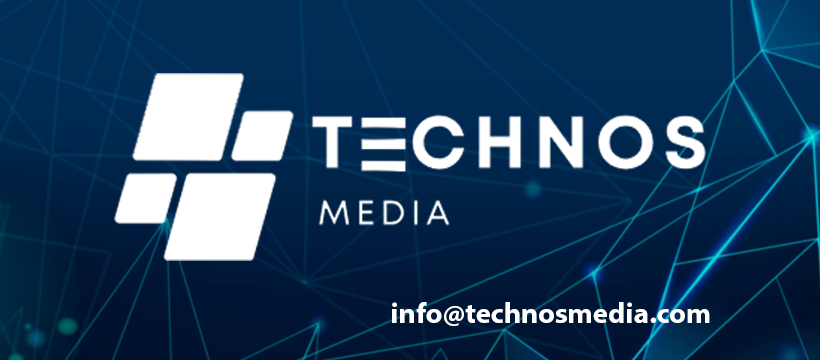The Role of Hardware in Cybersecurity: Is It More Crucial Than Software?

Strong 8k brings an ultra-HD IPTV experience to your living room and your pocket.
In a world where cyber threats are growing more sophisticated every day, the conversation around cybersecurity has become more critical than ever. Traditionally, cybersecurity has been synonymous with software-based solutions — antivirus programs, firewalls, intrusion detection systems, and the like. However, as technology advances and threats evolve, hardware is beginning to take center stage. This shift raises a crucial question: Is hardware now more important than software in cybersecurity?
This article explores the intricate balance between hardware and software in cybersecurity, breaking down how each contributes to digital defense, why hardware is becoming increasingly vital, and what the future may hold for both domains.
Understanding the Core of Cybersecurity
Cybersecurity refers to the practice of protecting systems, networks, and programs from digital attacks. These cyberattacks typically aim to access, alter, or destroy sensitive information, extort money, or disrupt normal business operations.
Traditionally, cybersecurity has focused heavily on software-based solutions because of their flexibility and ease of deployment. But software alone isn’t foolproof — and as hackers become more adept at bypassing digital defenses, hardware is stepping in to fill the gaps.
The Role of Software in Cybersecurity
Software is often the first line of defense against cyber threats. Here are some of the key roles it plays:
1. Detection and Prevention
Antivirus programs, anti-malware tools, and firewalls analyze incoming data and traffic to detect and block malicious activity.
2. Authentication and Access Control
Software systems verify user identities and manage who has access to what information, often through password systems or biometric integrations.
3. Encryption
Software-based encryption transforms sensitive data into unreadable code that only authorized users can decrypt and access.
4. Monitoring and Alert Systems
Cybersecurity software constantly scans systems for suspicious behavior, sending real-time alerts to administrators when threats are detected.
5. Patching Vulnerabilities
Software updates and patches fix bugs or vulnerabilities that could be exploited by hackers.
Software is versatile and dynamic, but it also has a significant downside — it’s vulnerable to the very systems it’s supposed to protect. If malware or ransomware infiltrates the software layer, the entire security framework can be compromised.
Why Hardware is Gaining Ground in Cybersecurity
As software-based defenses struggle to keep up with increasingly complex attacks, hardware is being recognized as a critical — and sometimes superior — layer of security.
1. Hardware-Based Isolation
Hardware can create isolated environments where sensitive data is processed. These Trusted Execution Environments (TEEs) ensure that even if the operating system is compromised, the data within the TEE remains secure.
2. Secure Boot Processes
Modern computers now use a "secure boot" feature that verifies the integrity of the system before allowing it to load the operating system. If any tampering is detected, the system refuses to boot.
3. Hardware Security Modules (HSMs)
HSMs are dedicated physical devices used to securely manage encryption keys. They are tamper-resistant and provide high levels of data protection for applications like banking, government systems, and secure communications.
4. Biometric and Physical Access Controls
Fingerprint readers, retina scanners, and facial recognition systems are hardware-based technologies that add a robust layer of user verification.
5. Preventing Physical Tampering
Some hardware components are designed with built-in mechanisms to detect physical tampering. Once detected, they can erase stored information or render themselves inoperable, preserving data confidentiality.
Comparing Hardware and Software in Cyber Defense
To determine whether hardware is more crucial than software, let’s compare them based on several factors:
Feature
Software
Hardware
Flexibility
High – Easily updated or patched
Low – Harder to update or replace
Performance
May cause slowdowns during heavy operations
Often faster, especially with dedicated functions
Tamper Resistance
Can be bypassed or modified
More difficult to tamper with physically
Cost
Generally more affordable
More expensive due to physical components
Ease of Deployment
Fast and scalable across networks
Requires physical installation and integration
Both have strengths and weaknesses, but hardware excels in providing unyielding, physical barriers that software simply cannot replicate.
Real-World Examples of Hardware in Cybersecurity
Apple’s Secure Enclave
Apple integrates a dedicated chip called the Secure Enclave in its devices. It handles fingerprint and Face ID data, encryption keys, and other sensitive information — completely isolated from the rest of the device’s system.
Intel’s Trusted Execution Technology
Intel processors come with built-in features like Trusted Execution Technology (TXT), which helps protect against software-based attacks by providing hardware-level isolation.
YubiKey and Hardware Authentication Devices
YubiKey is a hardware authentication device used for two-factor authentication (2FA). Unlike SMS or app-based 2FA, physical authentication can't be intercepted remotely.
These technologies highlight how hardware complements — and sometimes surpasses — software in ensuring security.
When Hardware Takes the Lead
There are scenarios where hardware isn’t just helpful — it’s indispensable:
High-security environments like government agencies and financial institutions demand hardware-level encryption and tamper-proof storage.
IoT devices, which are notoriously vulnerable, often rely on secure hardware chips to authenticate and encrypt data.
Cloud data centers use HSMs and secure processors to isolate and protect customer data from other users or system breaches.
In these contexts, hardware isn’t just part of the solution — it’s the foundation of it.
Challenges of Relying Solely on Hardware
Despite its strengths, hardware has limitations:
Inflexibility: Unlike software, hardware can't be updated easily. If a security vulnerability is discovered, it may require physical replacement.
Cost: Implementing high-level hardware security across an organization can be expensive.
Physical Constraints: Devices can be stolen, damaged, or degraded over time.
Because of this, hardware should not be seen as a replacement for software, but rather as a complementary component in a multi-layered defense system.
The Best of Both Worlds: Hybrid Security Models
Cybersecurity experts now advocate for a hybrid approach — combining the best of hardware and software to build robust, layered defense systems.
Software monitors the system, updates configurations, and responds to threats in real time.
Hardware enforces critical security policies, protects sensitive data, and ensures system integrity at the core level.
This combination dramatically improves resilience against cyberattacks and limits the potential for a single point of failure.
Future Trends in Hardware Security
As technology continues to evolve, the future of hardware security is looking bright — and necessary. Key trends include:
1. Quantum-Resistant Hardware
With quantum computing on the horizon, today’s encryption methods may soon become obsolete. Hardware developers are already working on quantum-resistant chips.
2. AI-Integrated Security Chips
Machine learning is being built directly into hardware to detect anomalies and patterns that suggest cyberattacks, allowing for faster and more accurate threat responses.
3. Secure Hardware for Edge Computing
As edge computing grows, hardware security will play a key role in securing devices that operate outside centralized networks, such as autonomous vehicles and industrial machines.
4. Biometric Fusion Technology
Future devices will likely use multiple biometric inputs (e.g., fingerprint + retina) stored securely in hardware to authenticate users with near-perfect accuracy.
Conclusion: The True Power of Hardware in Cybersecurity
So, Is Hardware Technology Important for Cybersecurity? Undeniably, yes. Hardware not only supports software-based defenses but often surpasses them in areas where tamper-resistance, isolation, and low-level control are essential. While software remains critical for flexibility and scalability, hardware provides the unshakable foundation upon which trustworthy digital security is built.
So, Is Hardware Technology Important for Cybersecurity? Undeniably, yes. Hardware not only supports software-based defenses but often surpasses them in areas where tamper-resistance, isolation, and low-level control are essential. While software remains critical for flexibility and scalability, hardware provides the unshakable foundation upon which trustworthy digital security is built.
So, Is Hardware Technology Important for Cybersecurity? Undeniably, yes. Hardware not only supports software-based defenses but often surpasses them in areas where tamper-resistance, isolation, and low-level control are essential. While software remains critical for flexibility and scalability, hardware provides the unshakable foundation upon which trustworthy digital security is built.
In the cybersecurity battle, software may be the front line — but hardware is the fortress. By combining the adaptability of software with the impenetrable strength of hardware, we can create a digital ecosystem that’s truly prepared to face the threats of today — and tomorrow.
Note: IndiBlogHub features both user-submitted and editorial content. We do not verify third-party contributions. Read our Disclaimer and Privacy Policyfor details.


